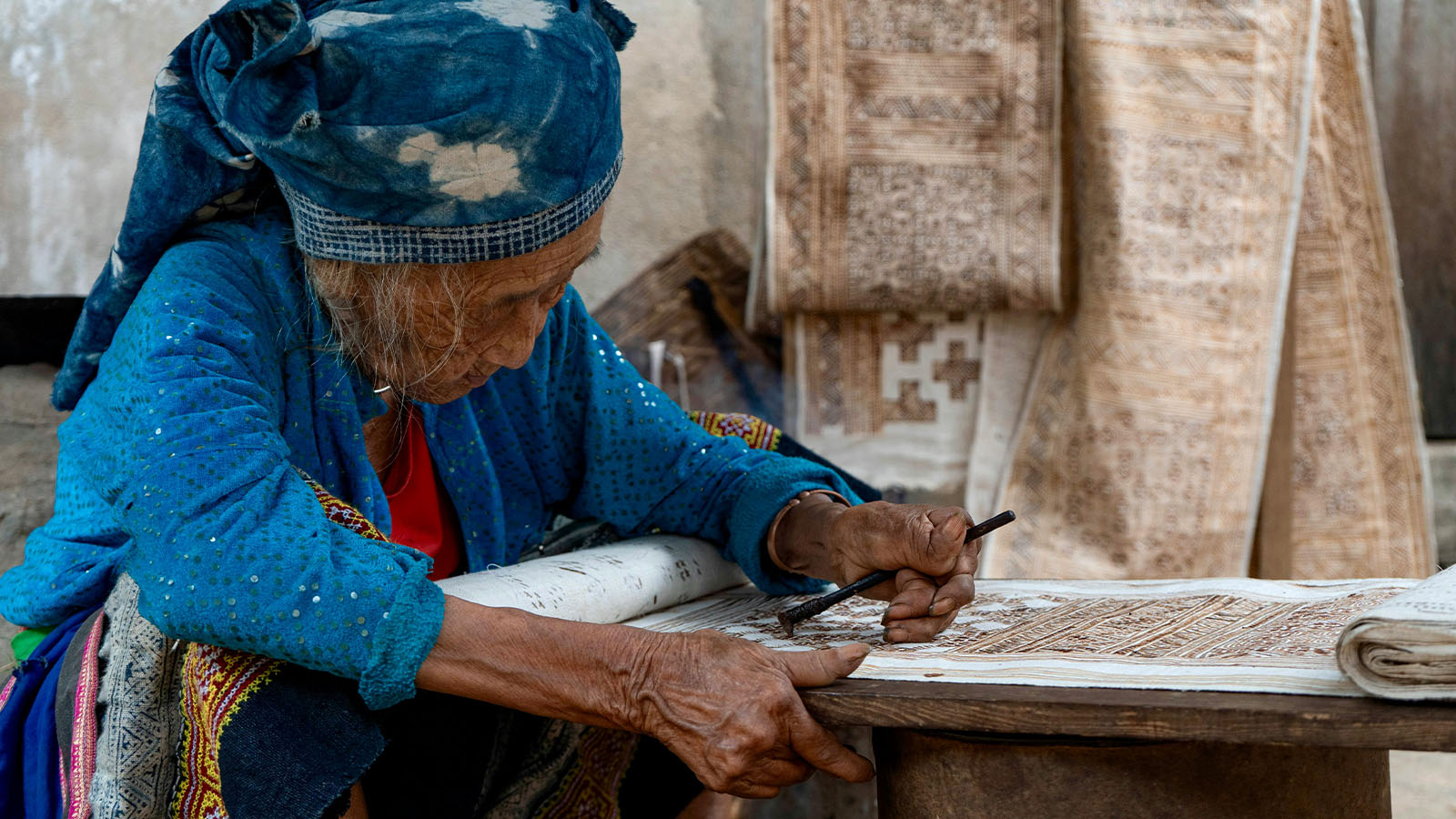Best Card to Use in Vietnam for Foreigners
If you’re planning a trip to Vietnam, one of the first things you’ll want to figure out is how to pay for things while you’re there. Should you carry cash, swipe your credit card, or use a mobile wallet? Vietnam’s payment landscape has changed a lot in recent years, but cash is still important, especially outside major cities. That said, using the right card can make your travels easier, safer, and even cheaper. In this guide, we’ll go over all the major payment options available, from credit and debit cards to travel cards and mobile apps. We’ll also help you find the best card to use in Vietnam for foreigners, depending on your needs, where you're from, and how long you’ll be staying.
Vietnam Payment Methods for Foreigners
While Vietnam is becoming more modern and connected, it's still a cash-heavy country. That said, cards and mobile payments are also widely used, especially in big cities like Ho Chi Minh City and Hanoi. The local currency is the Vietnamese dong (VND).
Cash
Cash is still the most common way to pay in Vietnam. Most local restaurants, markets, small shops, and transportation services like motorbike taxis only accept cash. You’ll need cash for street food, rural areas, public transport, and some budget hotels. It’s smart to always carry some small bills on you.
Credit Cards
If you’re wondering, “Can I use credit cards in Vietnam?”—the answer is yes, but not everywhere. Credit cards are accepted at many hotels, high-end restaurants, department stores, shopping malls, and tourist agencies. The most widely accepted cards are Visa and MasterCard. American Express (AmEx) is accepted at some international hotels and upscale venues, but not as widely as Visa or Mastercard.
Debit Cards
Most foreign debit cards work in Vietnam. If your card has a Visa or MasterCard logo, you can use it at most ATMs. Debit cards are useful for withdrawing VND in cash. You can also use them for direct payments at modern stores, hotels, or restaurants. Just remember that not all places accept them.
You can use your US bank debit card or Mastercard debit card in Vietnam, but always check with your bank about international fees. We’ll talk more about this later in the debit card section.
Prepaid and Travel Cards
Some people prefer prepaid travel cards. These are cards you load money onto before your trip. They can help you control your spending and avoid overspending. Some popular options include Wise, Revolut, and Monzo. These cards usually offer good exchange rates and lower fees.
Wise Card and Other Fintech Cards
You can use the Wise card in Vietnam, and it works very well. Wise lets you hold and spend multiple currencies, including VND. You can also withdraw cash from ATMs. Many travelers use Wise to avoid hidden fees and poor exchange rates. It's one of the best choices for foreigners looking for a practical and cost-effective way to pay in Vietnam.
Should I use cash or a credit card in Vietnam?
When traveling in Vietnam, you're going to need both cash and cards. The country is moving forward with digital payments, but cash is still essential in many situations.
Where You Can Use Credit or Debit Cards
In large cities like Ho Chi Minh City, Hanoi, Da Nang, and Nha Trang, you can use credit or debit cards at most:
-
Hotels and resorts
-
Upscale restaurants and cafes
-
Supermarkets and department stores
-
International chains and convenience stores
-
Travel agencies and airline offices
Most of these places accept Visa and MasterCard. Keep in mind that even in the cities, not every business accepts cards.
Where Cash Is Still King
In smaller towns, rural areas, and local markets, cash is the only option. This includes:
-
Street food stalls
-
Local buses and xe om (motorbike taxis)
-
Market vendors
-
Family-run guesthouses or homestays
-
Public restrooms and small ticket counters
Even in big cities, if you’re shopping at a small boutique, eating at a street-side restaurant, or grabbing a drink from a sidewalk café, you’ll need cash. Most places don’t have change for large bills either, so keep small denominations like 10,000 VND and 20,000 VND ready.
Always Carry Cash, Even in the City
It’s smart to carry a mix of cash and cards. ATMs are easy to find in cities but not in the countryside. Some remote places don’t have working ATMs at all, or they run out of money during holidays. If you only rely on cards, you might find yourself stuck.
So, should you use cash or a credit card in Vietnam? The answer is both. Use your card where you can, but always keep enough cash in your wallet to cover local meals, short rides, or unexpected situations.
Best Credit Cards to Use in Vietnam for Foreigners
There’s no single “best” credit card for everyone, but some cards work better in Vietnam than others. What matters most is avoiding foreign transaction fees, getting a good exchange rate, and having international acceptance.
Visa Credit Card in Vietnam
Visa is the most widely accepted card in Vietnam. You can use it for:
-
Hotel bookings
-
Restaurant bills
-
Shopping malls
-
Online purchases from apps like Grab, Shopee, and Agoda
If your Visa card is issued by a major international bank and has no international fees, it should work without problems.
Mastercard Debit or Credit Card in Vietnam
Mastercard is also widely accepted, slightly behind Visa but still reliable. It works for both point-of-sale transactions and ATM withdrawals. Mastercard debit cards are a good option if you prefer to spend your own money and avoid credit.
If you're from India, the HDFC credit card works in Vietnam, but you might face some limitations. You’ll want to call your bank before traveling to activate international usage. HDFC doesn’t waive foreign transaction fees, so you’ll likely pay around 3.5% per transaction. That’s why it’s not the best choice unless you have no alternative.
Cards with No Foreign Transaction Fees
Cards that don’t charge extra for foreign purchases are the best option. Here are some good choices:
-
Capital One Venture/Quicksilver (US)
-
Chase Sapphire Preferred/Reserve (US)
-
American Express Platinum
-
Revolut / Monzo (UK, EU)
-
Barclaycard Rewards Credit Card (UK, EU)
Wise Card in Vietnam
T"Wise Card" is one of the most popular options for travelers and expats in Vietnam. You can:
-
Hold and convert into VND at real exchange rates
-
Use it for online payments or shopping
-
Withdraw from ATMs up to your free monthly limit
You can also top up your Wise account from your home bank, which makes it convenient if you’re staying long-term. In our opinion, it’s one of the best all-around cards to use in Vietnam.
Contactless and Mobile Wallet Payments
Some modern shops and cafes accept Apple Pay or other contactless payments, but it's not very common yet. You can try it in supermarkets or chains like Starbucks or 7-Eleven, but don’t expect to use it everywhere.
So, what card is best to use in Vietnam? In our experience, it’s a combination of:
-
A no-fee travel credit card for purchases
-
A Wise or Revolut card for cash withdrawals and online booking
-
A backup debit card in case your primary one fails
Using credit cards in Vietnam is convenient in the right places, but not universal. Choose your card wisely and keep cash on hand; that’s the best way to pay in Vietnam.
Debit and ATM Card Use in Vietnam
You can use your debit card in Vietnam, but how well it works depends on the type of card and the bank behind it. If your card has a Visa or Mastercard logo, you’ll likely be able to withdraw money from ATMs or use it for purchases at shops that accept cards.
Using Debit Cards at ATMs
ATMs are everywhere in cities like Hanoi, Saigon, and Da Nang. Most machines support international debit cards. You just insert the card, select English, and follow the prompts. Be aware of:
-
Withdrawal limits: Usually around 2,000,000 to 5,000,000 VND per transaction. Some allow more.
-
Fees: Most Vietnamese ATMs charge a local withdrawal fee, often between 30,000 and 60,000 VND (about $1–2.50). Your bank might also charge a foreign ATM fee unless you have a travel-friendly account.
Cards from Charles Schwab (US) refund all ATM fees, which is a big advantage. Revolut, Monzo, and Wise also offer limited free withdrawals.
Direct Debit Card Payments
You can also pay directly with debit cards at stores, hotels, and restaurants that accept cards. This works best with Visa debit cards or Mastercard debit cards. Acceptance is usually the same as with credit cards.
What Bank Cards Can I Use in Vietnam?
International cards with Visa or Mastercard are the most reliable. UnionPay works in some places, mostly with Chinese visitors. American Express and Discover are rarely accepted outside of major hotels.
Best Local (Vietnamese) Cards for Long-Term Visitors
If you’re staying in Vietnam for several months or more, it makes sense to open a local bank account and get a Vietnamese ATM or debit card. This makes it easier to pay bills, shop online, and use mobile wallets like MoMo or ZaloPay.
Top Vietnamese Banks for Foreigners
Here are the most popular banks used by expats and long-stay travelers:
-
Vietcombank
-
Techcombank
-
VPBank
-
MB Bank
How to Open a Bank Account in Vietnam
To open an account, you usually need:
-
Your passport with a valid visa
-
Proof of local address (hotel booking may work for short stays)
-
Temporary residence card or work permit (for longer stays)
Not all branches handle foreign customers, so ask ahead. Some banks are stricter than others. Vietcombank and MB Bank are generally easier to work with.
Local Cards and Mobile Payments
Once you have a Vietnamese bank account, you can use your local ATM card to:
-
Withdraw cash from any ATM with no fees
-
Shop in stores that accept domestic cards
-
Link your card to MoMo, ZaloPay, or VNPay for QR code payments
Locals use QR payments every day, especially for coffee shops, street food, taxis, and even medical bills. These apps are faster than cards and are now widely used in both cities and towns.
Using Travel Cards and Fintech Solutions
Travel cards and fintech solutions like Wise, Revolut, and Monzo are becoming more popular among foreign travelers and digital nomads in Vietnam. They offer better exchange rates, mobile control, and fewer hidden fees than traditional banks.
Pros of Using Fintech Cards
-
Great exchange rates with low or no markup
-
Multi-currency accounts, including Vietnamese dong (VND)
-
Mobile app control for locking your card, checking balances, and tracking spending
-
Limited free ATM withdrawals each month
-
Fast and cheap top-ups from your main bank account
You can also use them for online shopping and booking local services on apps like Grab, Agoda, or Shopee.
How to Use Them in Vietnam
-
Top up your account before or during your trip using your home bank
-
Convert into VND inside the app for better rates
-
Use the card for purchases in restaurants, hotels, and shops
-
Withdraw cash from ATMs when needed
Most ATMs in Vietnam accept Wise and Revolut cards without issues. Just watch out for withdrawal limits and local ATM fees.
Comparing to Traditional Bank Cards
Wise and Revolut offer better transparency, but they usually have lower ATM withdrawal limits. Traditional bank cards like Capital One or Chase might offer more perks and insurance. Ideally, bring both types.
Which Travel Card Is Best for Vietnam?
In our opinion:
-
Wise is the most reliable if you want to hold VND and pay like a local.
-
Revolut is great for budgeting and currency management.
-
Monzo is easy to use, especially for travelers from the UK.
-
Charles Schwab is the best for ATM fee refunds (US only).
Common Fees to Watch Out For
Using cards in Vietnam is convenient, but there are a few fees you should know about. These can add up if you're not careful, so it’s better to plan ahead.
Foreign Transaction Fees
Some international credit or debit cards charge a foreign transaction fee, usually between 1% and 3% of every purchase. If your card chargthis everyery time you use it in Vietnam, you'll pay extra.
ATM Withdrawal Fees
Most Vietnamese banks charge a local ATM fee for foreign cards, which ranges from 30,000 to 60,000 VND (about $1.25 to $2.50) per withdrawal. Your home bank might also charge an additional international ATM fee, unless you're using a fee-free option.
If you withdraw cash often, look for banks with lower ATM fees (we’ll cover that in the next section).
Dynamic Currency Conversion (DCC)
Many payment terminals in Vietnam offer Dynamic Currency Conversion, which asks if you want to be charged in your home currency (USD, EUR, etc.) instead of Vietnamese dong. This might seem convenient, but always choose to pay in VND. DCC usually includes a bad exchange rate and hidden fees.
Daily Withdrawal Limits
Most ATMs have a limit of 2–5 million VND per transaction, and some may cap you at a certain amount per day. If you're using a fintech card, your own app might also have a daily limit. Wise and Revolut let you increase this, but you might need to verify your identity.
ATM Withdrawal in Vietnam
ATMs are everywhere in Vietnam. You’ll find them at airports, shopping malls, 7-Eleven-type stores, banks, and outside many hotels. If you're in a major city, it won’t take long to find one that works.
Where to Find ATMs
-
Big cities like Hanoi, Ho Chi Minh City, and Da Nang: You’ll have no problem.
-
Tourist towns like Hoi ASapa, andpa, Ninh Binh: Also easbut they havebut a little less variety.
-
Rural areas: Fewer machines, so always carry extra cash if you're going off the beaten path.
Search for ATMs near bank branches for better maintenance and reliability.
Withdrawal Tips
-
Use ATMs attached to banks, not standalone ones.
-
Reject DCC and choose VND when prompted.
-
Withdraw larger amounts less often to save on fees.
-
Carry a backup card in case one gets blocked or retained.
Online Payment in Vietnam
Most local apps and websites accept Vietnamese bank cards (ATM/debit cards), but websites like Shopee, Tiki, Grab, Agoda, and Airbnb also work with international Visa or Mastercard credit cards.
In restaurants, hotels, and stores with card machines, credit card payments usually go through without a problem. However, online platforms sometimes reject foreign cards due to fraud prevention systems. If that happens:
-
Try a different card or a fintech card like Wise.
-
Switch to cash on delivery (for shopping apps).
-
Use a mobile wallet linked to your card or account.
Conclusion
Paying in Vietnam doesn’t have to be complicated once you understand the local habits and know which cards work best. Cash is still necessary in many places, but credit cards, debit cards, and travel cards are all useful tools if you choose the right one. From low-fee ATM withdrawals to online payments and contactless options, having a good card can save you money and make your experience smoother. We recommend carrying more than one option just case andand avoiding cards with high foreign transaction fees. With the right planning, you’ll have no problem finding the best card to use in Vietnam for foreigners and enjoying your trip without payment hassles.
Send us your comments about : Best Card to Use in Vietnam for Foreigners
Required fields *
You might also be interested
Our clients’ favorite journeys to customize
Looking for inspiration? Discover some of our most popular tours in Vietnam, highly appreciated by our travelers. They are a great starting point to help you choose the perfect journey through Vietnam, Laos, Cambodia, Myanmar, or Thailand—whether you’re traveling solo, as a couple, with family, or with friends.
And since this is your trip, feel free to customize it just the way you like!
Vietnam Cambodia Itinerary 14 Days
Hanoi – Hoa Binh – Mai Chau – Ninh Binh – Halong bay – Hue - Danang – Hoian – Saigon – Ben Tre - Can Tho – Saigon - Siem Reap Angkor - Tonlé Sap - Siem Reap – Ta Prohm - Departure
Vietnam 14 Day Itinerary
Vietnam 14-day itinerary covers the country’s top highlights and quintessential experiences for an unforgettable journey.
Honeymoon Tour Pakcages In Vietnam 12 Days
Saigon Arrival - City Tour – Mekong Delta – Danang – Hoian - by flight - Da Nang – Hanoi - by flight – Halong - overnight on junk – Departure
Authentic Hoang Su Phi Trekking Tours
Hoang Su Phi trekking tours take you to stunning terraces, meet few tourists, connect with locals and enjoy authentic culture.
Best Nha Trang Beach Tour 4 Days
Saigon/Hanoi – Nha Trang relaxation – Saigon/Hanoi – Departure
Mekong Delta Bike Tour Itinerary 7 Days
Cycle through the Mekong Delta in 7 days, discovering floating markets, orchards, craft villages, and tranquil green islands.
Are you interested in this tour?





































Comment